Before the month of May disappears in our mental/emotional/devotional rear-view mirrors, here’s what we did on May 31. Which is not, obviously, Memorial Day here, but the last day of the month dedicated to the Blessed Virgin Mary, as I’m sure you know. Or at least, as you know now.
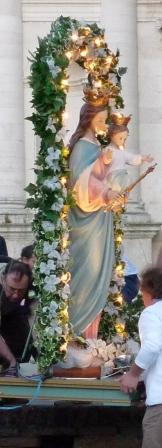
An example was the evening of May 24, the Feast of Santa Maria Ausiliatrice (Holy Mary the Helper): A few hardy men hoisted a large statue of Mary, surrounded by little lightbulbs, on their shoulders, and carried her from the church of San Francesco della Paola on via Garibaldi all the way to the church of San Pietro. She and her native bearers were followed by a long procession of parishioners, including the children who had recently been confirmed (they wore their white robes and little garland crowns). As they walked, they recited the Litany of the BVM. The priest would say his phrase, then they would respond with theirs, and so on, occasionally interspersing various prayers.
As per tradition everywhere in Italy, at least according to my experience, the priest’s prayers and cues were spoken with aid of an amplification system which would be happier if it could be a mule and just stop working altogether. There are inevitably random breaks in the connection, so the flow of piety is punctuated by sudden silences, and the occasional electrical shriek.
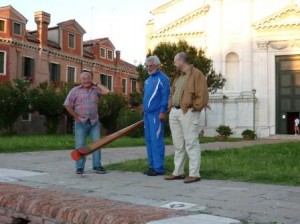
A week later, on the evening of May 31, the visit’s over, and this imposing statue has to go home. But this time she goes by boat. For several years, the local rowing club, the Remiera Casteo, has organized a corteo, or boat procession, loading the priest, acolytes and sound “system” on two sturdy caorlinas, followed by whoever wants to join in.
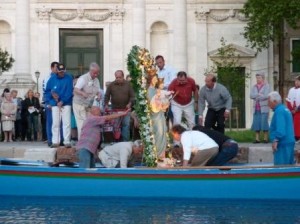
The first year we participated, Lino and I came in two sandolos rowed by cadets from the nearby Morosini naval college. That was the best version of all.
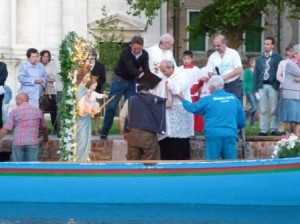

First, as we rowed under the wooden bridge leading to San Pietro, someone standing on it was tossing rose petals toward the boats as we passed. We rowed through little eddies of petals in the shining twilight water.
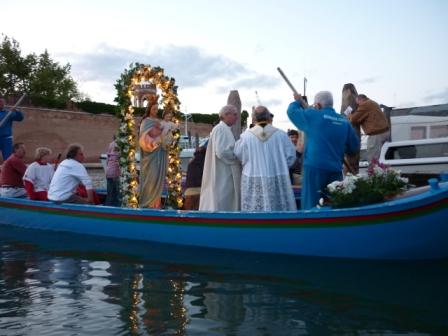
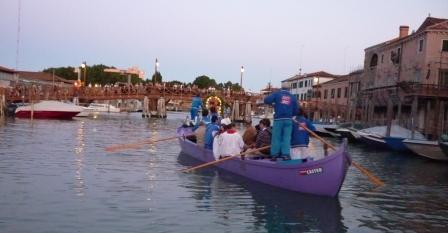
Second, after the statue was safely ensconced in her church, we rowed out the rio di San Isepo and into the Bacino of San Marco to get back to the college. The moon was so full it had completely overflowed, pouring a river of silver along our path. Then the boys started singing. I have no idea what the song was, though I do know that none of them will be appearing at La Scala. But their singing was wonderful because they were happy.
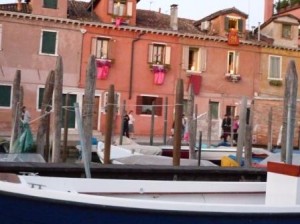
This year there was the usual chilly breeze — not strong, but insistent, highly annoying — and no rose petals. No cadets, either. Lino and I rowed a two-oar mascareta from the club, which we have now joined. The modest amount of singing was instigated by the priest, who as we turned the corner of the rio San Daniele to head down the long waterway flanking the Arsenal, segued into the classic “Mira al tuo popolo, O bella Signora” (Gaze upon your people, O lovely Lady).
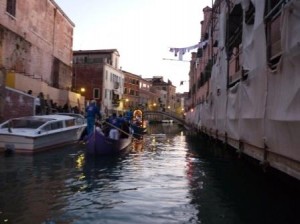
Even in the best of times (whenever those are), this hymn has a lugubrious undertow which gives piety a bad name. And in this case, the priest didn’t know many more of the lyrics than I do, and after the first verse he began to mangle even the bits he could remember, with the occasional improvisation. Lino snorted. A priest who doesn’t know the words (A) should turn in his badge and keycard or (B) not sing. This was one situation, though, where the sudden microphonal silences didn’t really do much damage.
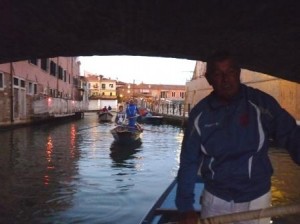
Madonna safely ashore, we rowed back to the club. There was still just enough light left in the darkening sky; we could see without having to turn on the warning flashlight, and better yet, there were hardly any motorboats out now anyway (it was going on toward 10:00). We glided over small smooth waves lifted occasionally by a few larger ones, which gave me the sensation that the lagoon had just breathed a deep sigh of satisfaction.
Or maybe that was me.
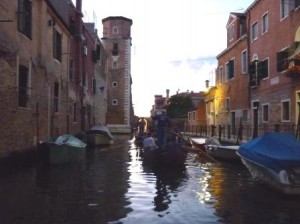
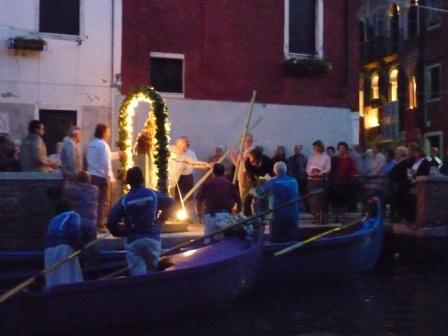

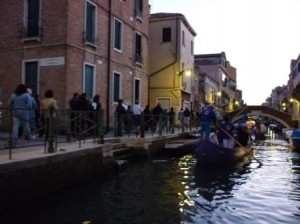
3 Comments
I know its old story but I was sure looking forward to hearing your take on the Vogalonga this year. But then again, I guess I was looking at the same thing you were except about 3 ft higher. I still would like to “hear” it from the “eyes” of a local.
Keep up the good work,
Otolini
Sorry to have disappointed you. I had every intention of writing something about it, but when I sat down to do so, absolutely nothing came to my mind. Well, no. Some things came to my mind but I couldn’t see how they could be particularly interesting.
For any readers who might wish to know, though, the Vogalonga this year was perfect. Weather, boat, crew — other boats, other crews — we slid through all the problem points in the course like a hot knife through butter.
The best thing about the whole event was our poppiere (man astern, captain, navigator, etc.): No less than a certain OTOLINI himself. You were fabulous, man, and I’m not the only one who thought so. Except I don’t “think” so, I know so.
Here’s to next year!!!